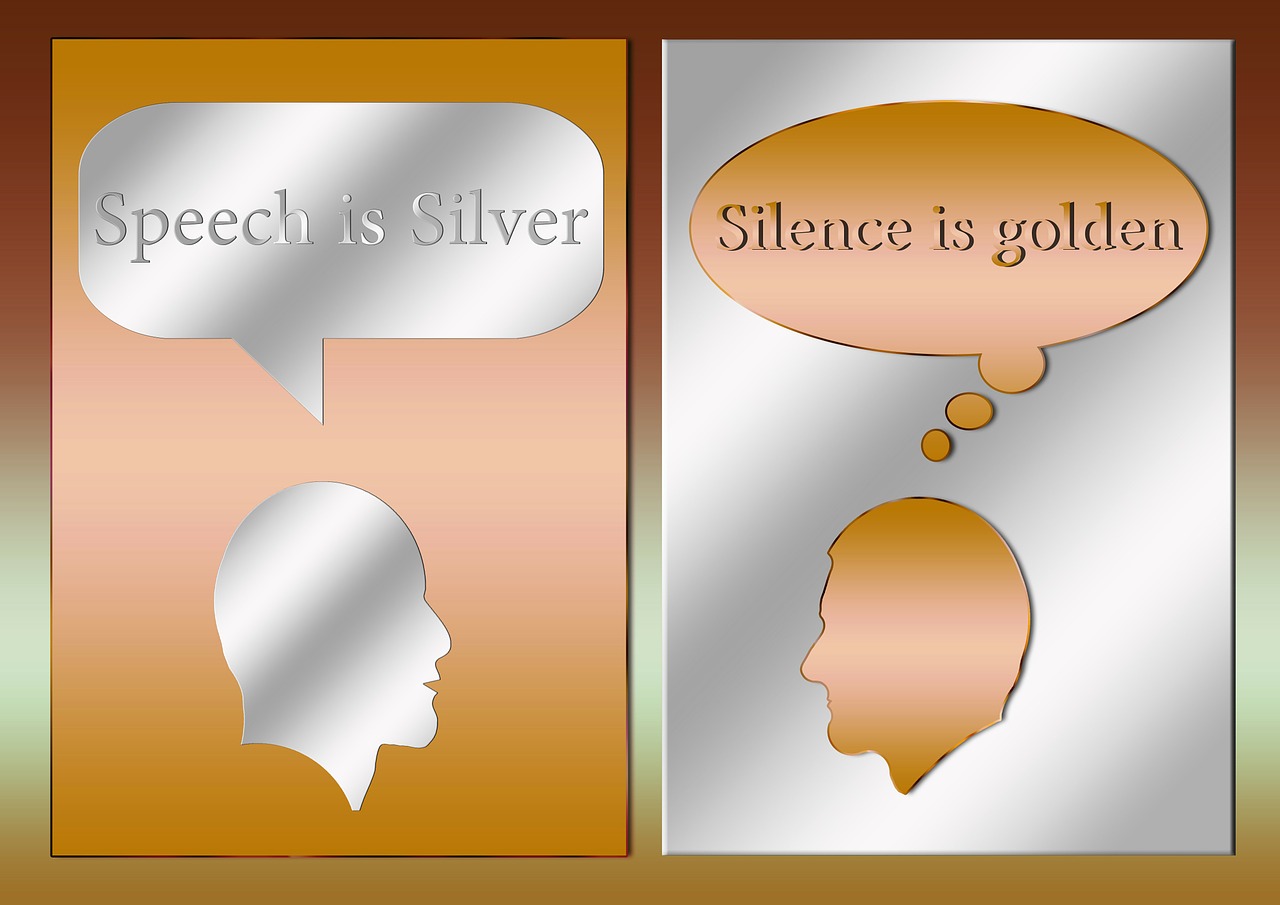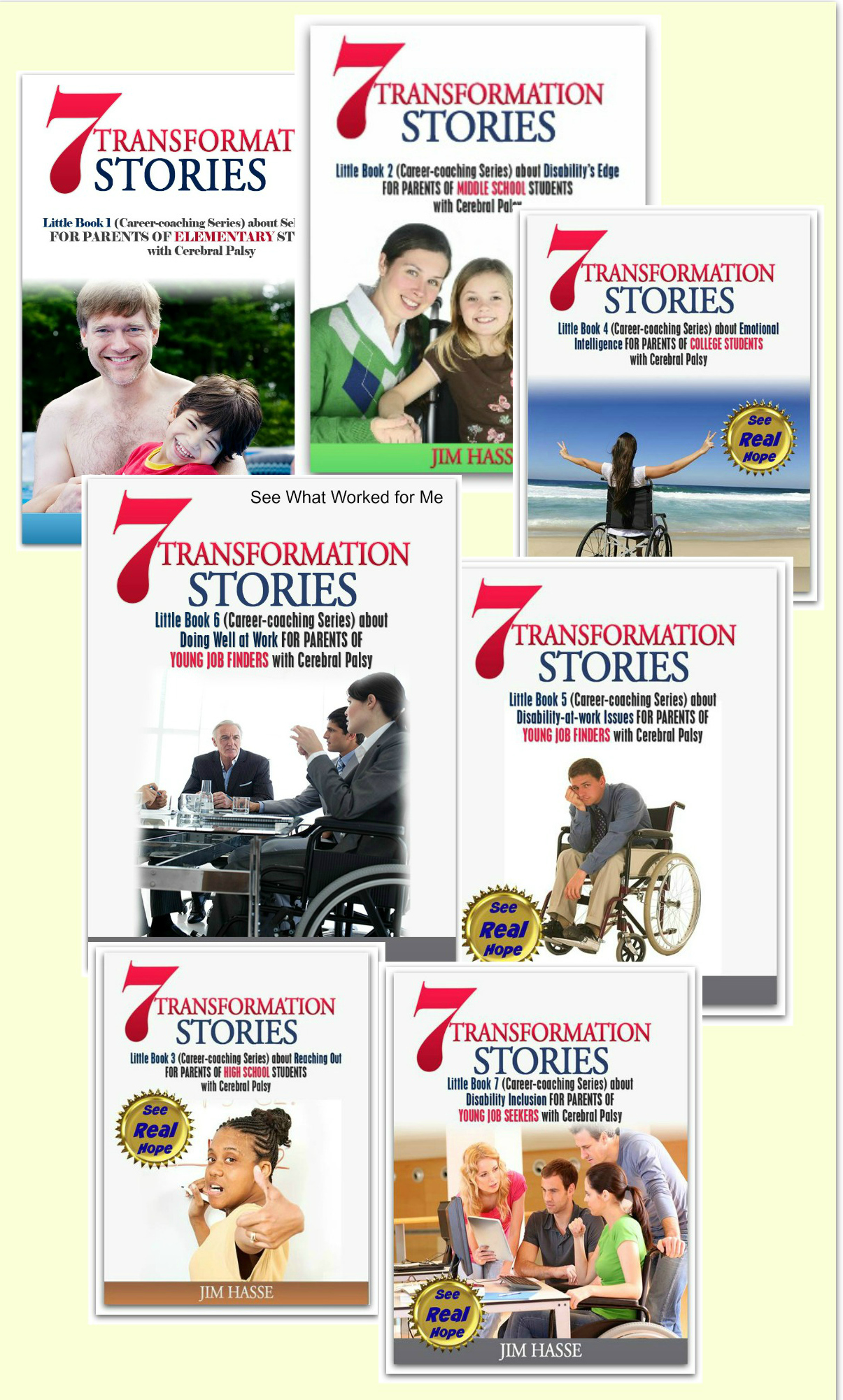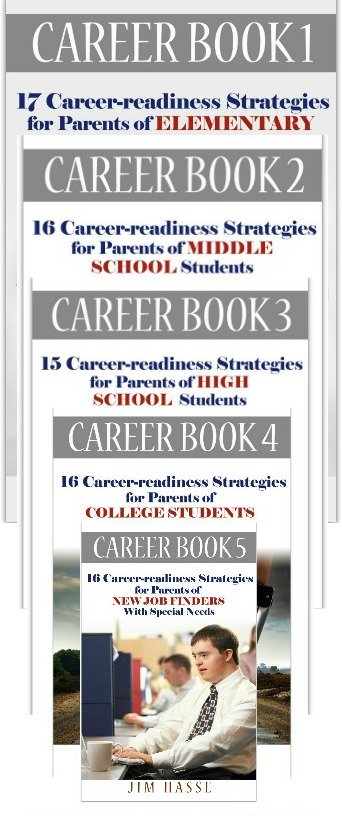Personality Test: Cerebral Palsy Career Builder for High School Students
By Jim Hasse, ABC, GCDF, Disability Employment Expert
_________________________________________________________
Here’s a simple personality test to measure how prepared your high school student with cerebral palsy (CP) is for the real-world job market: Does he or she know the ground rules for bringing less stress to a work team?
An affirmative answer to that question can eventually prove to be your son or daughter’s competitive edge when he or she makes the transition from school to work.
“Knowing how to manage your personal stress level and clearing the way for others around you to be less stressed are marks of a leader and a measure of social intelligence,” according to Jordan Friedman, MPH, The Stress Coach, a nationally recognized stress management and health promotion speaker and consultant.
Both attributes (leadership and social intelligence) are key elements in what I would call a personality test.
Friedman has his own stress-to-success story.
In the fifth grade, he was diagnosed with one of the largest brain tumors ever discovered. After brain surgeries, years of extreme vision loss, and pretending to be "normal," he went on to become a public health expert who now uses his experiences to motivate others to deal productively with life's challenges, changes and crises.
He’s an expert at avoiding anxiety, calming down quickly, seeking quality support and sleeping more soundly.
Friedman says leadership
within a work environment is essentially being aware of the “pinch points”
which cause stress and knowing how to reduce such tension through effective
observation, listening, communication and problem solving.

CP as a double-edged sword
Over the years, I’ve found my CP is a double-edged sword when it comes to workplace stress. It can either hurt or help a situation, depending on how well I handle the anxiety others normally feel when they meet me for the first time. It has become my personality test.
How I project myself -- and ultimately appear to others -- can be a barrier or a unique stress-reduction personal brand. If I appear to others as a stress reducer, then it’s another personal attribute I can use to show why I’m the better candidate for a particular job. I have passed my personality test.
I’m a stress generator (increasing the stress level of an entire team) if I’m a complainer, if I choose not to interact effectively with my colleagues by keeping to myself, if I shirk off my job responsibilities to others, if I get visibly upset each time another person reveals a false perception about CP or if I try to take advantage of my disability in gaining special workplace privileges. I’m stressed, and my stress affects the entire team. I have flunked my personality test.
Contrast those stressors with one simple stress reducer we can all employ: listening to others.
How
do you handle the anxiety
others normally feel when they meet
you and your youngster for the first time?
Join
PACER’s Facebook
discussion.
“I think people with disabilities have more experience in solving problems and dealing with crises than the average non-disabled person,” writes Peter Altschul, a Missouri-based consultant on the psychology of change and former diversity manager at Reuters News Service who happens to be blind.
“I have discovered that people will say things to me that they wouldn’t say to other (managers),” Altschul relates. “Maybe it’s something to do with their perception of our ‘semi-invisibility’ -- that those of us with disabilities are sometimes ignored as if we aren’t present -- and, therefore, are ‘safe’ listeners to unguarded remarks.”
It’s like having a built-in GPS at the upper ranks of an organization for locating what employees, at all levels and on an anonymous basis, are really feeling, a mark of senior management’s effectiveness in leadership.
I have also leveraged that phenomenon periodically in my own corporate communication career to benefit upper management. Otherwise guarded people at every level within an organization will sometimes feel free to speak candidly with me, even though they know I may represent senior management.
Stress-reducer ground rules
Flip 10 years into the future. Imagine the impact a discussion about your youngster’s skill as a stress reducer could have on a hiring manager’s decision once he or she has reached the second or third interview of the hiring process.
The ability to reduce stress within a work team could be the clincher. It could put your young job seeker into the position of proving, “I know how to pass the personality test.”
Here are several stress-reducer ground rules that
personality test usually addresses. Your high school student needs to start
preparing now for what will be required when he or she starts hunting for a
job. That means, upon accepting a job, he or she must be prepared to:
- Be candid about CP. Ask the
supervisor for an appropriate time to discuss it at a staff meeting.
- Gain an understanding
with the supervisor that, “I was hired because of my qualifications to do the
work at hand, and I expect to satisfy the same performance standards of my colleagues.”
It means working with the supervisor to reinforce that understanding in the
minds of co-workers.
- Assure the supervisor
that, “I will not play a passive or manipulative role on the work team. Appropriate
discussions concentrate on what I can do and how -- not what I can’t do.” That
means making sure responsibilities within the team are well defined and
equal.
- Show the supervisor that,
“I want to be treated like everyone else on your team (which means neither
ignoring nor highlighting me because I happen to have a disability).”
- Realize that employees
will often have false perceptions about CP (maybe based on previous experiences
with individuals who did not know how to handle their disability appropriately
in a workplace situation). That means helping the supervisor be prepared to
deal with those false assumptions, which often are simply due to lack of
information. Request that, as a new employee with a disability, “I’m not to be
judged until I have had time to establish myself as a member of the team.”
- Work with the supervisor
to encourage a relaxed atmosphere that includes humor but does not tolerate
stereotyping, bigotry, or mean humor.
- Make sure a person
taking on new duties is adequately compensated in some way for them if the
supervisor must shift a responsibility from one job description to another
because of your youngster’s CP. Higher pay or authority (or simply allowing for
an exchange of tasks) can make the addition acceptable so it doesn’t breed ill
will between your son or daughter and that person.
- Work with the supervisor
to make a list of ideas about how to reduce your youngster’s stress (and that
of the supervisor and co-workers) during the first three months of your youngster’s
new job.
- Make sure venues for
routine social interaction with co-workers are accessible, especially if
they are off-site. Your son or daughter will need to make it a point to participate
in those social interactions.
Friedman maintains there is no upside to ignoring stressors and no downside to preventing or resolving them. In fact, neglecting to give stress its due attention as a personality test will most certainly result in a greater negative impact than that of any time taken to prevent that tension.
So, now’s the time (while
in high school) for your youngster with CP to learn how leveraging a disability can diffuse stress. By doing so, your high
school student will eventually be more prepared to get hired precisely because
he or she has proven to be a leader with social intelligence.
How
do you handle the anxiety
others normally feel when they meet
you and your youngster for the first time?
Join
PACER’s Facebook
discussion.
Return from Personality Test to Part-time Jobs
Go to Cerebral
Palsy Career Builders
This is Creative Commons content. You can freely and legally use, share and repurpose it for non-commercial purposes only, provided you attach this sentence and the following attribution to it (including the two links):
Originally written and illustrated by Jim Hasse, ABC, GCDF, owner of Hasse Communication Counseling, LLC, who, as a person with cerebral palsy, served for 10 years as a vice president in a Fortune 500 company during his 29-year career in corporate communication. He’s an Accredited Business Communicator, certified as a Global Career Development Facilitator and author of 14 Amazon books about disability awareness and disability employment issues.





